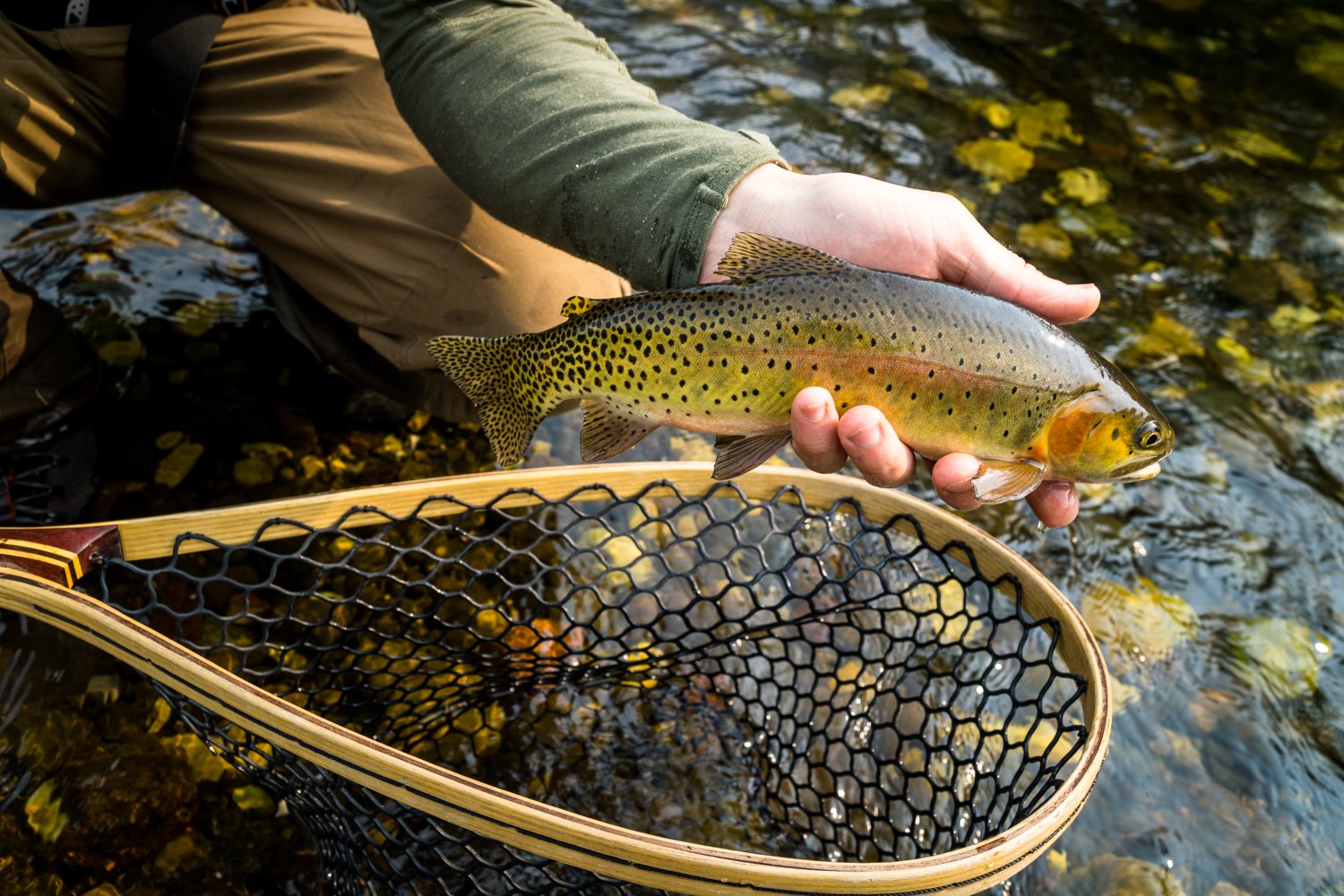3 Tips When Fly Fishing Small Pocket Water
Small pocket water is the testing ground for many anglers. It demands precision casts, excellent line control and quick reflexes on the hook set. It’s also somewhat forgiving on those special creeks and rivers where trout populations are abundant.
Here in the Colorado backcountry, these remote waters see little pressure. The cutthroat and brook trout are very willing and ready to attack flies. In fact, having the same fish strike repeatedly is not uncommon. However, many anglers skip sections of small pocket water, opting instead to fish the deeper runs and pools – those more “obvious” places where trout hold.
The next time you’re fishing a wilderness river or creek, don’t skip those little sections of pocket water! Take the time to fish small pockets behind rocks and other obstructions. It may not look like much, especially compared to that big, juicy pool down at the bend. But slow down and make a couple casts into each inconspicuous little pocket. You might be surprised at where you’ll find fish.
Here are 3 tips to make the most of your next pocket water fly fishing experience…
1. Watch Your Position
Pocket water situations are often tight, leaving little room for back casts. Your body position and movements all impact success on these waters. Fishing directly upstream and moving in the upstream direction ensures you are always fishing untouched water and not spooking fish. It also opens space for back casts because you are casting over water and not into the bushes.
Pay attention to where you are standing and plan an approach whenever you tackle pocket water fisheries. Being systematic and moving at a nice pace while keeping advantageous body positions will help you pick apart every fish holding pocket in range.
2. Keep a Short Line
Pocket water moves quickly on every side except the pocket itself. Formed by rocks, logs and any obstruction to the current, the pocket sits immediately downstream and has a soft spot where trout love to sit. They have great oxygen, no current to fight and access to food. It’s the perfect habitat.
Using a short line with minimal contact will help with your presentation. The current surrounding the pockets will quickly grab lines and add drag to flies. Shorter line presentations limit the amount of line on the water and that direct contact with the flies creates a more natural drift. When you add more line, it requires more mending and line control. Keep it short and simple and your presentations will benefit.
3. Bushy Dry Flies and Streamlined Nymphs
When it comes to dry fly fishing, the low riding parachutes and cripples will do great but they quickly become waterlogged. If the fish are being extra picky, these flies can do well but it pays to use foam or dries with heavy hackle. They float higher for longer and require fewer fly changes throughout the day.
Nymphing in small pockets requires flies that sink quickly. Fishing a dry with a nymph dropper is the perfect pocket water setup. Try nymphs that are not overly large but remain heavy. Size 12-18 fast-sinking nymphs like Perdigons are an excellent choice. Tungsten beads are heavy and punch through the fast currents. When the dry flies aren’t producing, using two nymphs and high sticking them through the pockets will get the flies deep enough to catch a few trout.
If you need help picking out flies, we highly recommend the team at Anglers All. Check out their selection online, or give them a call for great personalized service.
Fly Fishing With Budge’s Wilderness Lodge
To learn more about our backcountry fly fishing adventures, please take a few minutes to read through our Fishing Page. For specific availability or other details, don’t hesitate to contact us. We’d love to help you plan a memorable wilderness vacation!



